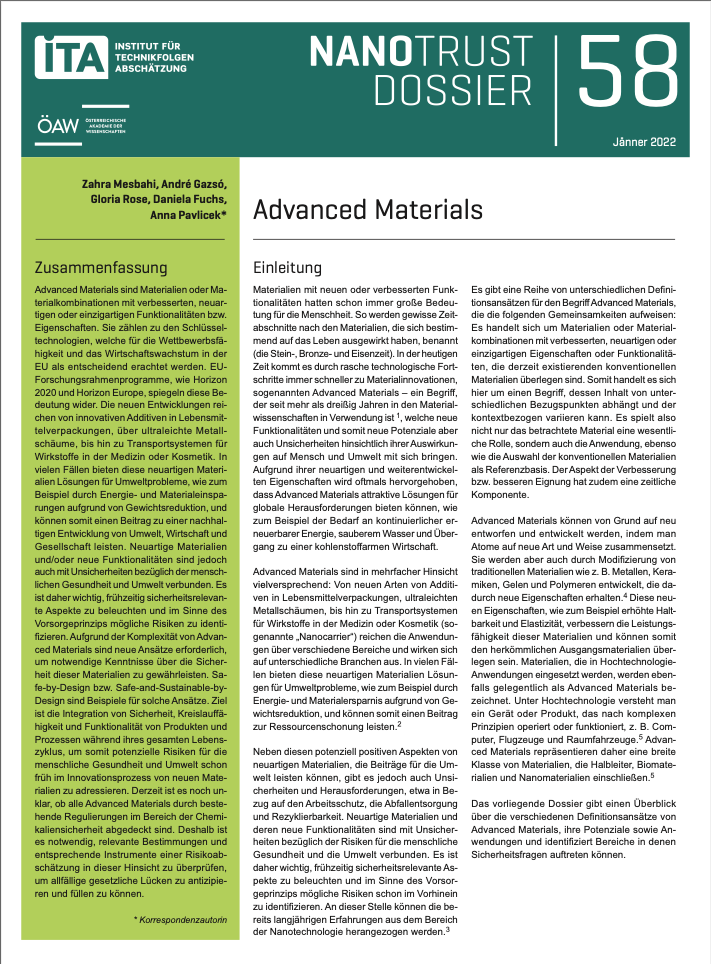Abstract:
There is currently no clear evidence that engineered nanoparticles (ENPs) pose a significant threat to the environment. Nonetheless, major gaps in our knowledge exist:
Environmental analytics: Suitable methods to determine nanoparticle concentrations and properties in complex environmental media such as water, soil, sediment or sewage sludge, as well as in organisms, remain to be developed.
Fate and behavior in natural environmental compartments: The special properties of artificial nanomaterials complicate predictions. The current dearth of data is a major stumbling block in comprehensively assessing the fate and behavior of nanomaterials in the environment.
Ecotoxicology: Research is concentrated primarily on controlled laboratory studies using cell cultures or model organisms. One of the major critiques here is the use of unrealistically high doses. No detailed ecotoxicological studies are available that can explain the mechanisms of uptake, distribution, metabolization and excretion of nanoparticles.
Environmental exposure: The most probable entry pathways of nanomaterials into the environment are via sewage water and wastes, but to date no quantitative exposure data are available for nanoparticles. The available studies are based exclusively on model calculations and estimates, which considerably hampers comprehensive risk assessment.
Overall, no definitive conclusions can be drawn on whether environmental damage can be expected or not.
Das NanoTrust-Team bietet an dieser Stelle in loser Folge sog.
Dossiers an,
die in leicht-fasslicher, aber wissenschaftlich fundierter Weise auf ca.
drei bis sechs Seiten den aktuellen Wissensstand zu den aktuellen Themen der
aufkommmenden Nanodebatte zusammenfassen.



 Home
Home Print
Print
 References
References
 Share
Share
